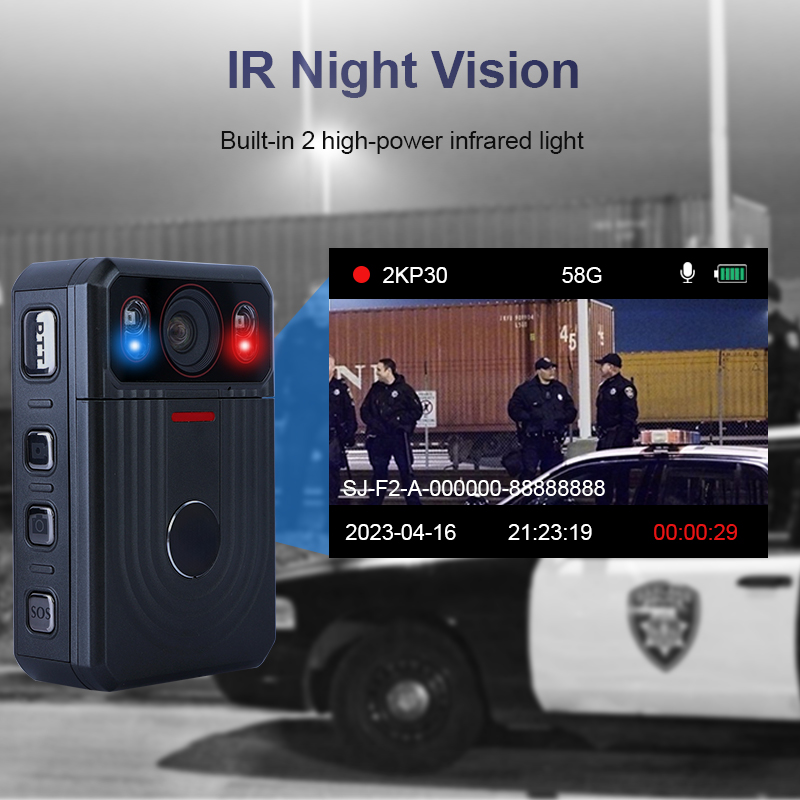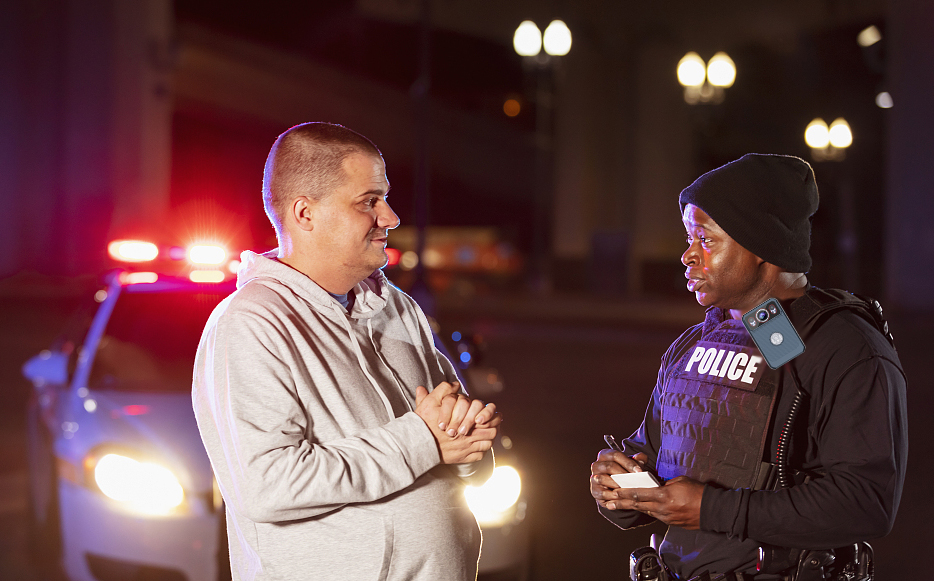Over the past few years, law enforcement agencies worldwide have increasingly adopted body cameras to bolster accountability, transparency, and trust in their engagements with the public. These small yet powerful devices, worn by police officers during their daily duties, have the potential to revolutionize modern policing practices. In this blog post, we will explore the benefits, challenges, and implications of body cameras in law enforcement, highlighting their role in promoting officer accountability, fostering community trust, providing valuable evidence, and improving overall policing practices.
Promoting Officer Accountability
The utilization of body cameras in law enforcement promotes officer accountability through various mechanisms. One primary benefit is the deterrence effect of body cameras. The knowledge that their actions are being recorded acts as a strong deterrent, causing officers to reconsider engaging in misconduct. This heightened awareness significantly influences their behavior, resulting in reduced instances of excessive force, inappropriate conduct, and biased practices.
Secondly, body cameras create an objective record of encounters, providing an accurate account of events. This recorded footage serves as evidence that can be reviewed and analyzed. Officers are more inclined to adhere to professional standards and guidelines when they know their interactions are being captured on camera. The knowledge that their actions will be subject to scrutiny fosters a sense of responsibility and encourages them to act in a manner that aligns with the principles of fairness, respect, and compliance with the law.
Furthermore, the review and analysis of individual officer performance based on body camera footage play a crucial role in promoting accountability. Supervisors can assess the recorded encounters to provide feedback and identify areas for improvement. Constructive discussions can take place, targeted training programs can be developed, and personalized professional development plans can be implemented. This process helps officers enhance their skills, knowledge, and judgment, leading to a higher level of accountability among law enforcement personnel.
In summary, body cameras promote officer accountability by acting as a deterrent against misconduct, creating an objective record of encounters, and facilitating the review and analysis of individual officer performance. By instilling a sense of responsibility and adherence to professional standards, these devices contribute to a culture of accountability within law enforcement agencies. The presence of body cameras not only promotes transparency but also encourages continuous improvement and professional development among officers, ultimately enhancing the trust and confidence of the public in law enforcement.

Fostering Community Trust
Body cameras in law enforcement have a significant impact on fostering trust between agencies and the communities they serve. The transparency and unbiased documentation of encounters between officers and civilians help bridge the gap of perception and ensure a more accurate representation of events.
The presence of body cameras provides reassurance to community members that their interactions with law enforcement are being recorded and can be reviewed if necessary. This increased transparency builds trust, as individuals feel that their concerns and experiences are being taken seriously. It also holds both officers and civilians accountable for their actions, promoting a more equitable and respectful approach to policing.
One of the critical benefits of body cameras is their ability to dispel misconceptions or biases that may exist between law enforcement and certain communities. By capturing objective footage of interactions, body cameras provide an opportunity to challenge preconceived notions and narratives, fostering a more balanced understanding of police-civilian encounters. This can help break down barriers, improve communication, and build stronger relationships between law enforcement agencies and the communities they serve.
Furthermore, body cameras are invaluable in addressing complaints or disputes. Instead of relying solely on conflicting testimonies, reviewing the recorded footage can offer a clear and objective perspective on what transpired during an incident. This not only saves valuable time and resources but also helps establish a more accurate representation of events, leading to more just outcomes.
Overall, body cameras serve as a powerful tool in fostering trust between law enforcement agencies and the community. By promoting transparency, accountability, and a more balanced understanding, these devices contribute to building stronger relationships and enhancing the overall perception of law enforcement. The use of body cameras helps create a sense of fairness, justice, and integrity in interactions between officers and civilians, ultimately leading to safer and more harmonious communities.

Providing Valuable Evidence
The use of body camera footage in criminal investigations has proven to be a valuable asset. The captured recordings offer an objective and detailed account of encounters, providing vital evidence that can be presented in court. This evidence significantly enhances the integrity of the legal process, ensuring a fair and just determination of guilt or innocence.
The visual and audio elements captured by body cameras provide an unbiased record of events. This documentation serves to corroborate or challenge accounts provided by officers, witnesses, or suspects. By presenting an objective perspective of incidents, body camera footage helps prevent wrongful convictions and protects the rights of the accused. It strengthens the overall credibility of the justice system by offering concrete evidence that can be examined and evaluated by all parties involved.
In addition to criminal investigations, body camera footage plays a crucial role in resolving complaints against officers, internal investigations, and disciplinary proceedings. The objective record of incidents provided by body cameras allows law enforcement agencies to address misconduct or inappropriate behavior swiftly and fairly. This not only ensures accountability within the police force but also helps maintain public trust and confidence in the integrity of law enforcement.
Furthermore, body camera footage can serve as a valuable tool for training and professional development within law enforcement agencies. The recorded encounters can be analyzed to identify areas of improvement, refine tactics, and enhance officer performance. This proactive approach to utilizing body camera footage contributes to the continuous improvement of policing practices and fosters a culture of professionalism and excellence.
In conclusion, body cameras serve as a crucial source of evidence in criminal investigations, enhancing the integrity of the legal process and ensuring a fair determination of guilt or innocence. The use of body camera footage also helps resolve complaints, internal investigations, and disciplinary proceedings, promoting accountability within law enforcement agencies. By providing an objective record of incidents, body cameras contribute to the improvement of policing practices and the maintenance of public trust in law enforcement.
Training and Professional Development
The utilization of body cameras also presents an opportunity for law enforcement agencies to improve training and professional development. The footage captured during real-life encounters can be reviewed to identify areas for improvement, refine de-escalation techniques, and enhance overall performance.
By analyzing the recorded footage, supervisors can identify patterns, strengths, and weaknesses in officer performance. This data-driven approach allows agencies to tailor their training programs, focusing on specific areas that require attention. It enables the identification of effective tactics, strategies, and de-escalation techniques, ultimately enhancing the quality of interactions between officers and the public.
The review of body camera footage also promotes a culture of continuous learning within law enforcement agencies. It allows officers to reflect on their own practices, learn from their experiences, and adapt their approaches to align with best practices and community expectations. By leveraging the recorded encounters, agencies can develop targeted training modules, workshops, and simulations that address specific challenges faced by officers in the field.
Furthermore, body cameras can facilitate mentoring and coaching opportunities. Supervisors can use the recorded footage to provide constructive feedback, guidance, and support to officers. This personalized approach to professional development helps officers grow and improve their skills, leading to a more competent and effective police force.
Conclusion
The proliferation of body cameras in law enforcement represents a significant step towards enhancing accountability, transparency, and trust between officers and the communities they serve. These devices offer numerous benefits, including promoting officer accountability, fostering community trust, providing valuable evidence, and improving training and professional development.
While the implementation of body cameras is not without challenges, such as privacy concerns and the need for clear policies and guidelines, the advantages they bring to law enforcement far outweigh the potential drawbacks. The objective documentation provided by body cameras enhances the integrity of the legal process, ensures a fair determination of guilt or innocence, and protects the rights of both officers and civilians.
Law enforcement agencies must continue to refine their policies regarding body camera use, taking into account privacy considerations, guidelines for activation, and secure handling of recorded footage. Regular audits and oversight mechanisms are essential to ensure compliance and maintain public confidence in the responsible use of this technology.
As body cameras become more prevalent in law enforcement, it is crucial for agencies to embrace them as a tool for positive change. By leveraging the benefits of body cameras, law enforcement can build trust, enhance professionalism, and work towards more equitable and effective policing practices. Ultimately, the use of body cameras contributes to the creation of safer communities and a stronger bond between law enforcement and society as a whole.


 French
French German
German Arabic
Arabic Italian
Italian Spanish
Spanish Japanese
Japanese Persian
Persian Korean
Korean Chinese (Simplified)
Chinese (Simplified)









